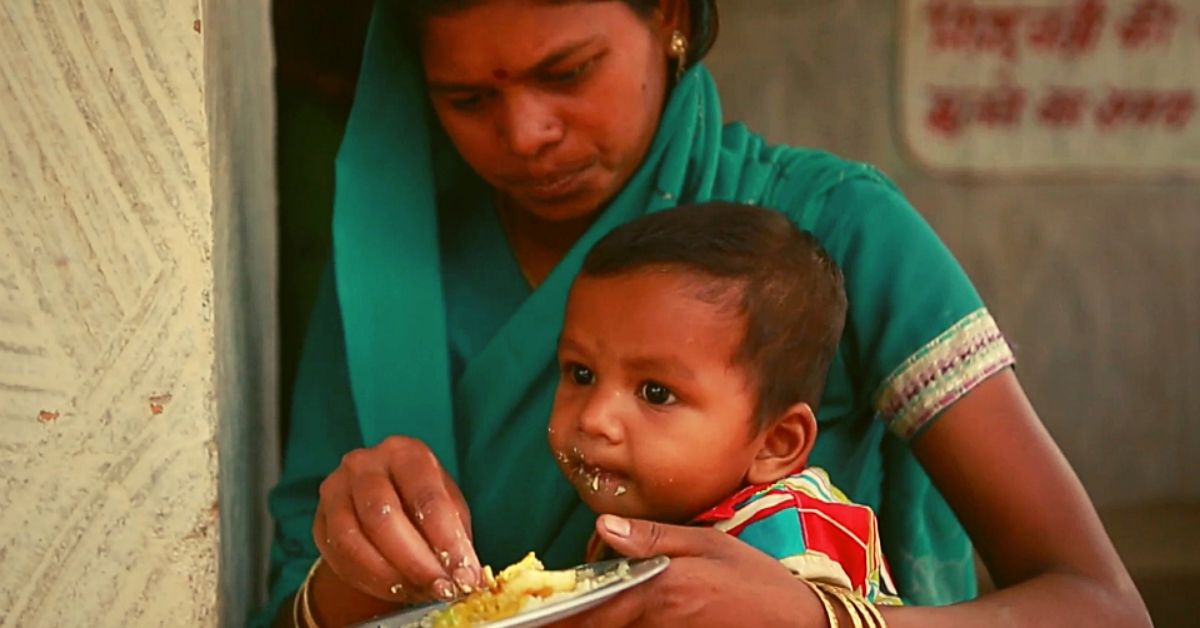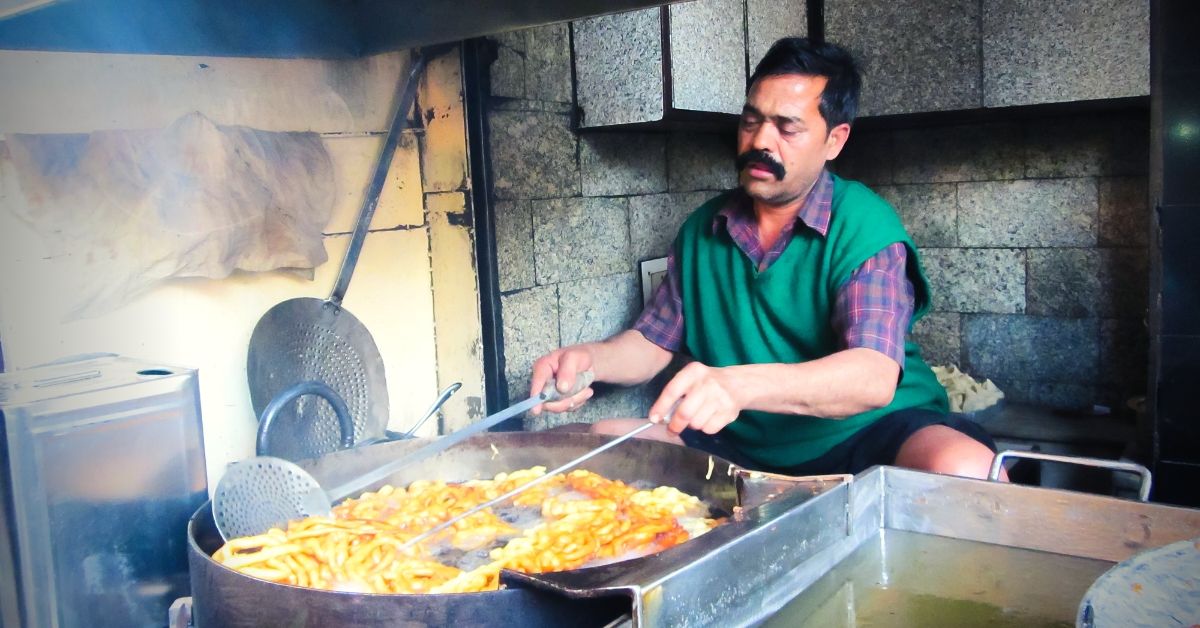FSSAI Introduces +F Logo for Rice, Wheat, Milk & Oil: Here’s What It Means
Is your food fortified or not? And why does it matter? Here’s all you should know before hitting the grocery store! #FSSAI #EatSafe #ConsumerAwareness

More than a quarter of the world’s preschool children deficient in Vitamin A reside in India.
In addition to this, in our country, 55 per cent of the women between the ages of 15 and 49; 69 per cent of children between ages 6 to 59 months; and 24 per cent of men are anaemic.
While consuming nutritious food is a must for good health, what makes it better is if it is organic. Shop for organic staples here.
These are not mere statistics but a cumulative outcome of years of malnutrition and deficiencies that have multiplied to alarming numbers. And to tackle this, the Food Safety and Standards Authority of India (FSSAI) mandated food fortification, identified by the recently introduced blue sign +F on packets of food staples like milk, rice, oil etc. will help people identify which products are nutritious.
A report by the FSSAI which quotes the World Bank, states that no other technology available today can offer such an opportunity to improve lives and accelerate development at such a low cost and in such a short time. According to the FSSAI officials, manufacturers are mandated to print the logo on staple food products to ensure that all sections of the society, including the most vulnerable, receive timely and appropriate nutrition.
“If the instruction is not followed then it will be termed under the misbranded category and they would have to face legal action,” said a senior officer from FSSAI, Maharashtra to the Free Press Journal.
But what exactly is food fortification and how is it beneficial?
Here’s all you need to know about the recent mandate:
What is it?

Food fortification, although a lesser known concept, is definitely not a new one for India.
It dates back to the 1950s when fortification of vanaspati with vitamin A was mandated. Even iodisation of salt for human consumption was a landmark step towards food fortification in 2005.
Since then, apart from salt, widely consumed food staples like wheat, oil, milk and rice have been driving the fortification movement in India.
Essentially, the simple practice of food fortification involves effectively intervening the food supply to deliver vitamin and mineral rich foods to large populations. Through this process, minute quantities of missing nutrients in the daily diet such as vitamin A, iron and iodine are added to commonly consumed food to enhance the nutrient quality thereby contributing to improve the health of a large population in a short span of time.
This involves adding of a vitamin and mineral mixture called the premix to the widely-consumed food.
Benefits

Used for its mass impact at low-cost, fortification of food is known to have helped eliminate vitamin and mineral malnutrition in industrialised nations and many developing countries.
Almost 13.2 percent of neural tube defects were prevented in 2015 in 58 countries that practiced mandatory fortification of flour and folic acid (contained in foods like rice, cereals, bread etc).
In the long run, it also helps raise vitamin and mineral levels by moving the population toward consuming recommended dietary allowances for most micro-nutrients, thus making it a long term and sustainable strategy.
Also Read: Lifeline For Thousands: 5 Ways Hunger Heroes are Fighting India’s Biggest Enemy!
A cost effective intervention that does not require any change in the eating patterns of food habits of people, fortification also ensures a minimal or zero alteration in food characteristics like taste and cooking properties.
Guidelines
On 2 August, 2018, FSSAI introduced the Food Safety and Standards (Fortification of Foods) Regulations, 2018, to regulate the provisions regarding fortified food. Some of the important features of the regulations are as follows:
It prescribes the standards of addition of micro-nutrients for the purpose of food fortification. The manufacturers of the fortified food have to provide a quality assurance undertaking.
Packaging and labelling has to state the food fortificant added, +F logo and the tagline “Sampoorna Poshan Swasth Jeevan”.
Also, it should be in compliance to the Food Safety and Standards (Packaging and Labeling) Regulations, 2011
Impact
1. Fortified salt: In 1950, Indians were among the first countries in Asia to implement mandatory salt iodisation, which eventually led to the huge success in public health under the intellectual or developmental disability (IDD) control programme.
A new breakthrough of double fortified salt, whereby it will tackle both iron and iodine, is also underway.

2. Fortified wheat: The second most consumed staple in India, fortification of wheat flour demonstrated great results, especially in Darjeeling, where, in the year 2000, a significant reduction in anaemia and vitamin A deficiency in just 2 years was recorded. The flour was fortified with iron, vitamin A and folic acid.
3. Fortified rice: A pilot project was undertaken in the central kitchen in Vizag where 61,000 children were fed with fortified rice, for a year (2010-11). Not only was the rice well-accepted by the children and benefited their health, but also proved to be strong enough to withstand Indian conditions of transport, cooking and usage with zero change in colour, flavour or nutrient composition.
4. Fortified milk: Studies suggest the intake of fortified milk by children not only increased mean serum vitamin D levels but also decreased morbidity rates, causing 18 per cent lower incidence of diarrhoea, 26 per cent lower incidence of pneumonia, 7 per cent fewer days with high fever and 15 per cent fewer days sick with severe illness.
5. Fortified oil: With 99 per cent of penetration in Indian households, edible oil fortified with vitamin A and D proved to be a success. It was found that around 93 per cent of vitamin A was retained even after 15 minutes of cooking, when the oil was added to the mixture of rice, beans or pulses.
Even after 30 minutes of cooking, the nutrient retention had only decreased by 3 per cent.

Similar to the past triumphs, we hope that the recent development will further help these foods reach a larger population and push for a healthier nation!
(Edited by Saiqua Sultan)
Like this story? Or have something to share?
Write to us: [email protected]
Connect with us on Facebook and Twitter
If you found our stories insightful, informative, or even just enjoyable, we invite you to consider making a voluntary payment to support the work we do at The Better India. Your contribution helps us continue producing quality content that educates, inspires, and drives positive change.
Choose one of the payment options below for your contribution-
By paying for the stories you value, you directly contribute to sustaining our efforts focused on making a difference in the world. Together, let’s ensure that impactful stories continue to be told and shared, enriching lives and communities alike.
Thank you for your support. Here are some frequently asked questions you might find helpful to know why you are contributing?


This story made me
-
97
-
121
-
89
-
167













